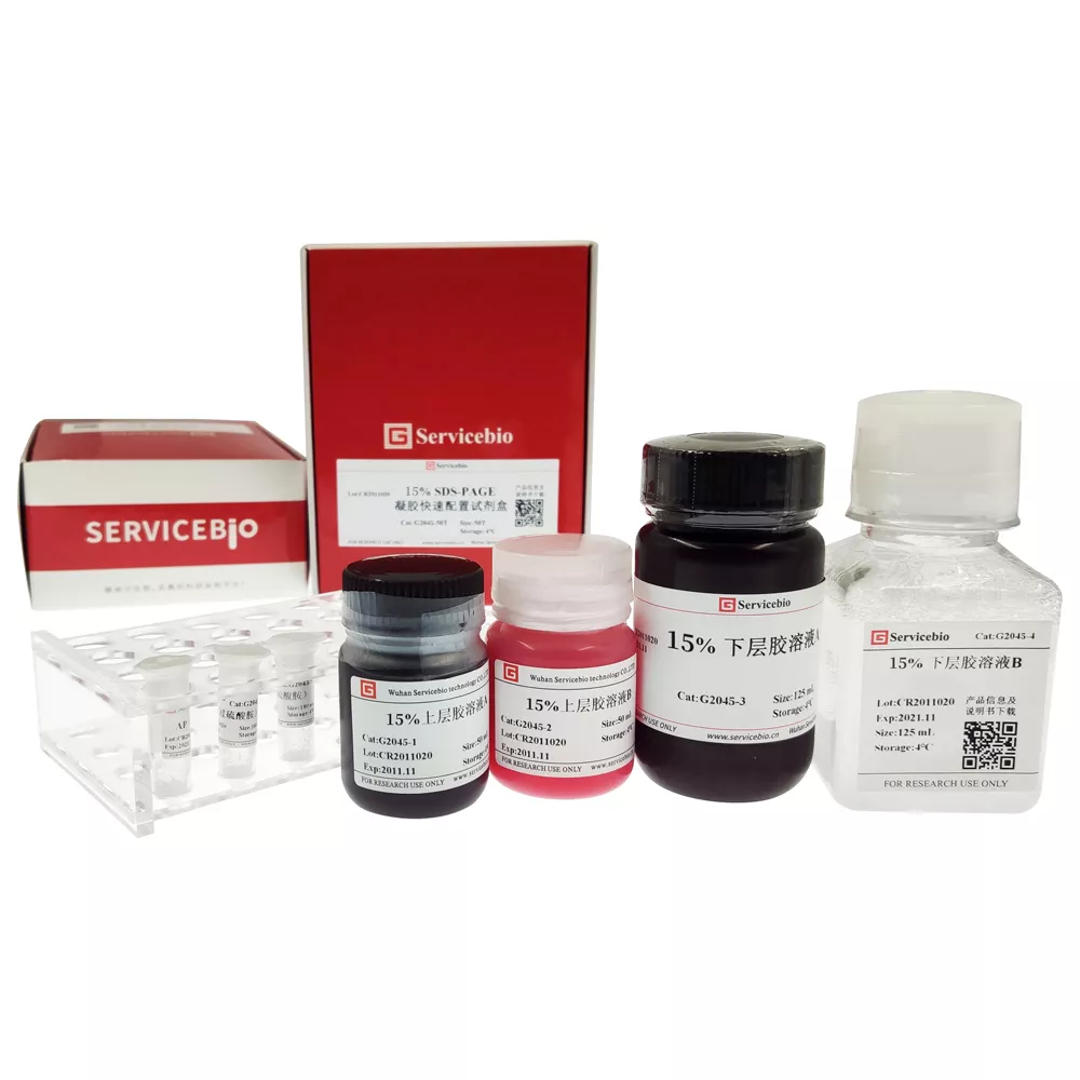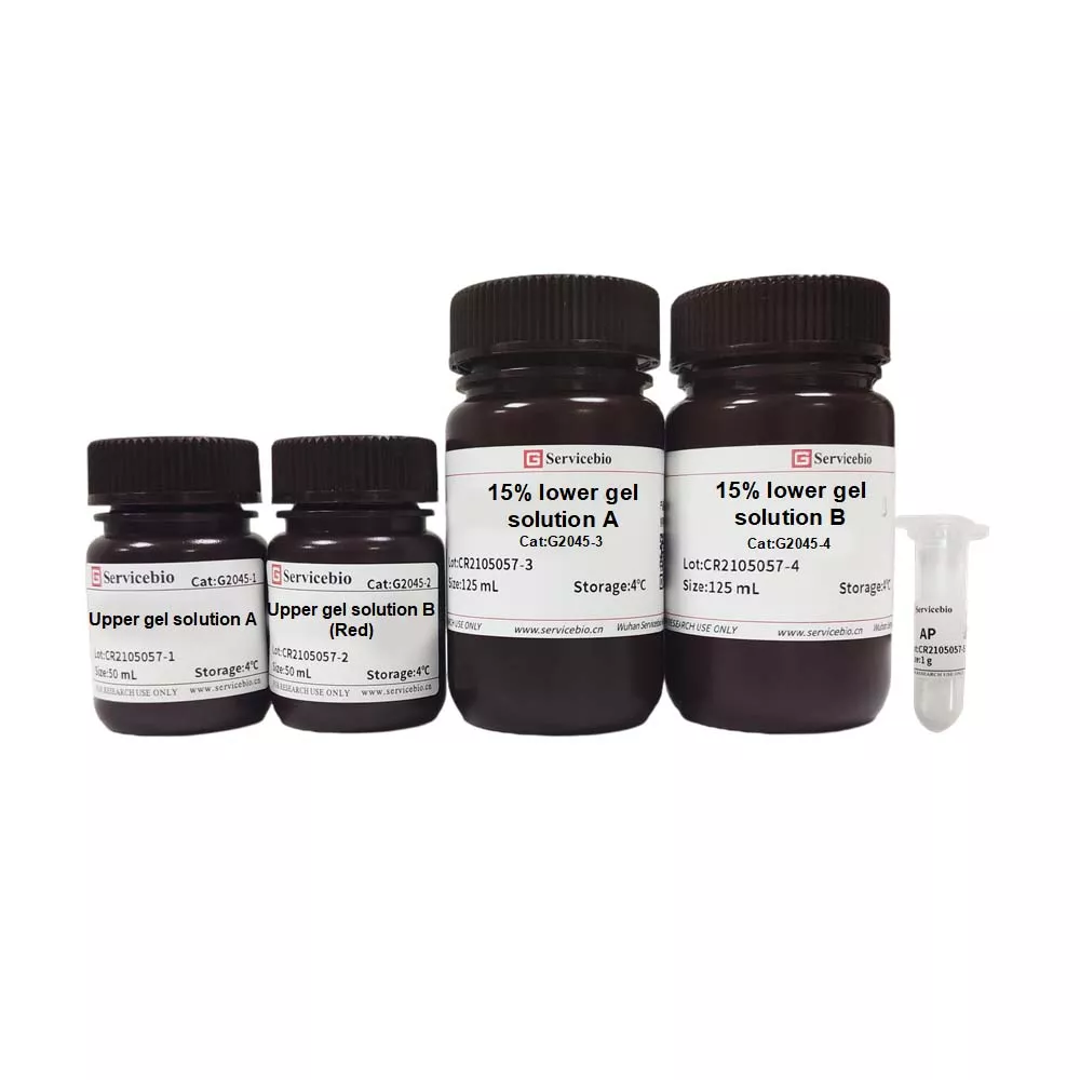- Products
- Consumables
- Equipment
- Reagent
- Culture Media
- Buffer
- Powder
- Molecular Assay
- Nucleic Acid Preservation & Remover
- Nucleic Acid Extraction
- Reverse Transcription
- PCR Amplification
- Nucleic Acid Electrophoresis
- Protein Assay
- Protein Extraction
- Gel Preparation
- Protein Electrophoresis
- Protein Transfer
- Antibody
- ECL Kit
- Cell Separation and Digestion
- Nucleus Fluorescence Detection
- Cell Apoptosis Detection
- Cell Proliferation Detection
- Pathological
- Fixative & Dewaxing Liquid
- Staining Solution
- Antigen-Retrieval Solution
- Immunohistochemistry Kit
- Immunofluorescence Staining Kit
- Mounting Media
- Monitoring Equipment
- Digital 3D Solutions
- Radiography & Imaging Systems
- Dental Units and Accessories
- Handpiece
- Scaling and Polishing
- Files and Burs
- Implants Surgery
- Endodontics
- Laser System
- Maintenance Disinfection
- General Dental Products
- Curing Light
- Distilled Water Machine
- Furniture and Designs
- Base Plate Wax
- Cotton roll dispensers
- Disposable Saliva Ejectors
- Micro Applicator
- Mixing Bowl and Spatula
- Bur holder box
- Dam Kit
- Safety Glasses
- Sectional Contoured Matrices Kit
- Disposable Dental Air Water Syringe Tips
- Denture Box
- Others
- Retractor
- Implant Tray
- Mobile Side Cabinet in Consulting Room
- Solutions
- Careers
- About Us
G2045-50T 15% SDS-PAGE colored (red) gel ultra-fast preparation kit G2045-50T
This kit provides a simple and fast 15% SDS-PAGE color (red) gel preparation solutions.It can cast resolving and stacking gels at the same time,and handcast gels remain fresh for up to 1 week.It works for a standard Tris-glycine running buffer system.
The stacking gel reagent is dyed red, so we can easily identify each well of the gel when loading the sample. After the electrophoresis, the dye does not move to the resolving gel, so it will not affect subsequent experiments.
In addition, due to the neurotoxicity of TEMED, safer alternatives have been used to provide a safer experience for operators.
Quantity
| Item code | Description | Volume |
|---|---|---|
| G2045-1 | Stacker A | 50mL |
| G2045-2 | Stacker B (Red) | 50mL |
| G2045-3 | 15% Resolver A | 125mL |
| G2045-4 | 15% Resolver A | 125mL |
| G2045-5 | APS (ammonium persulfate) | 180mg x 3 (Powder) |
Technical Specification
Storage
Store at 4ºC, the shelf life is 1 year.
Assay Protocol / Procedures
1. Choose appropriate Concentration of acrylamide solution according to molecular weight of target protein;
|
Concentration of acrylamide |
Separation range |
|
6% |
50-250 kDa |
|
8% |
30-130 kDa |
|
10% |
20-100 kDa |
|
12% |
10-60 kDa |
|
15% |
< 40 kDa |
2. Prepare 10% APS solution:100 mg of APS powder is dissolved in 1.0 mL of ultrapure water to obtain a 10% APS solution;
Note: 10% APS solution can be stored at 4ºC for 1-2 weeks, and APS powder can be stored at -20ºC.
3. Preparation of 15% resolving gel acrylamide solution:in a suitable container, add equal volumes of 15% Resolver A and 15% Resolver B;
|
15% resolving gel preparation volume |
|||
|
0.75 mm Glass Plates (n=gels) |
1.0 mm Glass Plates (n=gels) |
1.5 mm Glass Plates (n=gels) |
|
|
15% Resolver A |
2 mL x n |
2.5 mL x n |
4 mL x n |
|
15% Resolver B |
2 mL x n |
2.5 mL x n |
4 mL x n |
|
10% APS |
40 uL x n |
50 uL x n |
80 uL x n |
4. Add the required volume of freshly made 10% APS to the combined resolver solution and mix well. Use an appropriate pipet to steadily dispense the solution into the cassette. Do not let bubbles form or solution mix with air. Fill the cassette to 0.5-1 cm below the bottom of the teeth on the comb. Immediately and slowly add pure water or ethanol to the cassette. Allow the resolver to polymerize for 15-30 min, then pour water or ethanol out;
Alternative:pour the stacking solution instead of water or alcohol as directed in the next steps.
5. Prepare stacking gel acrylamide solution by combining equal volumes of stacker A and B solution,then add required volume of freshly made 10% APS to the combined stacker solution and mix well.Pipet solution down the middle of the cassette, filling to the top of the short plates. Apply slowly and steadily to prevent mixing with the resolving solution. Align and insert the comb in the cassette carefully to prevent air from being trapped under the comb teeth;
6. After adding APS to the stacking solution mixture, casting should be started immediately and combs inserted within 8 min;
|
Stacker gel preparation volume |
|||
|
0.75 mm Glass Plates (n=gels) |
1.0 mm Glass Plates (n=gels) |
1.5 mm Glass Plates (n=gels) |
|
|
Stacker A |
0.8 mL x n |
1 mL x n |
1.5 mL x n |
|
Stacker B |
0.8 mL x n |
1 mL x n |
1.5 mL x n |
|
10% APS |
16 uL x n |
20 uL x n |
30 uL x n |
7. Allow the gel to polymerize for 15–30 min before electrophoresis;
8. The cast gels can be covered with a paper towel wetted with deionized water and stored in a zipper sealed plastic bag at 4ºC for up to one week.
Note:
- There is monomer acrylamide in the premix, which is harmful to human body. Please pay attention to protective measures during operation;
- Pour the gel as soon as possible after adding APS, do not leave it for a long time;
- There is a significant positive correlation between the solidification and the temperature of the gel. Under the same conditions, the higher the temperature, the faster the solidification rate.
- We also provide other colors (green, yellow, blue) of stacking solutions to distinguish different samples and different gel electrophoresis;
- Tris-Glycine buffer system is suitable (recommend our product: G2018-1 L).

Medical
Therapeutic Equipment
- HIFU
- Humidifier
- Ventilators
General Hospital Equipment
Diagnostic Equipment
Surgical Consumables
CareX™ robotics bedside care solutions

In Vitro Diagnostics and Life Sciences
Consumables
- PCR Consumables
- Tubes
- Micro-centrifuge Tube
- Low Retention Centrifuge Tube
- Large Volume Centrifuge Tube, Sterile
- Centrifuge Tube 5mL, Sterile
- Test Tube
- Tube Rack
- Coolbox
- Screw Cap Tube
- Screw Cap
- Transport Tube
- Cryoware
- Filtration
- Vacuum Filtration System
- Syringe Filter
- Membrane Filter
- Filter Paper
- Disposable Bottle Top Vacuum Filter
- Cell Culture & Microbiology
- Cell Culture Dish
- Cell Culture Flask
- Erlenmeyer Flask
- Cell Culture Plate
- Cell Culture Insert
- Bio-reaction Tubes
- Cell Scraper & Lifter
- Glass Coverslip
- Confocal Dish
- Chamber Slide
- Cell Strainer
- Confocal Plate
- Petri Dish
- Pipette Tips
Reagent
- Culture Media
- Buffer
- Powder
- Molecular Assay
- Nucleic Acid Preservation & Remover
- Nucleic Acid Extraction
- Reverse Transcription
- PCR Amplification
- Nucleic Acid Electrophoresis
- Protein Assay
- Protein Extraction
- Gel Preparation
- Protein Electrophoresis
- Protein Transfer
- Antibody
- ECL Kit
- Cell Separation and Digestion
- Nucleus Fluorescence Detection
- Cell Apoptosis Detection
- Cell Proliferation Detection
- Pathological
- Fixative & Dewaxing Liquid
- Staining Solution
- Antigen-Retrieval Solution
- Immunohistochemistry Kit
- Immunofluorescence Staining Kit
- Mounting Media
Monitoring Equipment

Dental
Digital 3D Solutions
Radiography & Imaging Systems
Dental Units and Accessories
Scaling and Polishing
Files and Burs
Implants Surgery
- BC and BV Series
- Implant System
- Surgical Kits
Endodontics
Maintenance Disinfection
- Sterilization Line
- Sealing Machine
General Dental Products
- Curing Light
- Distilled Water Machine
- Furniture and Designs
- Base Plate Wax
- Cotton roll dispensers
- Disposable Saliva Ejectors
- Micro Applicator
- Mixing Bowl and Spatula
- Bur holder box
- Dam Kit
- Safety Glasses
- Sectional Contoured Matrices Kit
- Disposable Dental Air Water Syringe Tips
- Denture Box
- Others
- Retractor
- Implant Tray
- Mobile Side Cabinet in Consulting Room
VetCare Solutions
Anesthesia
Dental Equipment
Critical Care Equipment
Surgical Equipment
Laboratory Diagnostics
Examination Diagnostics
Grooming Equipment
Cages
Eco Friendly Products
Consumables
SGVET Suntec
Quest Asia Technologies
SAMSUNG Ultrasound
Products
Media Center
About Us
© 2025 AJJ Healthcare Management Pte. Ltd
Powered by.png) Xsosys Technology (S) Pte. Ltd.
Xsosys Technology (S) Pte. Ltd.





